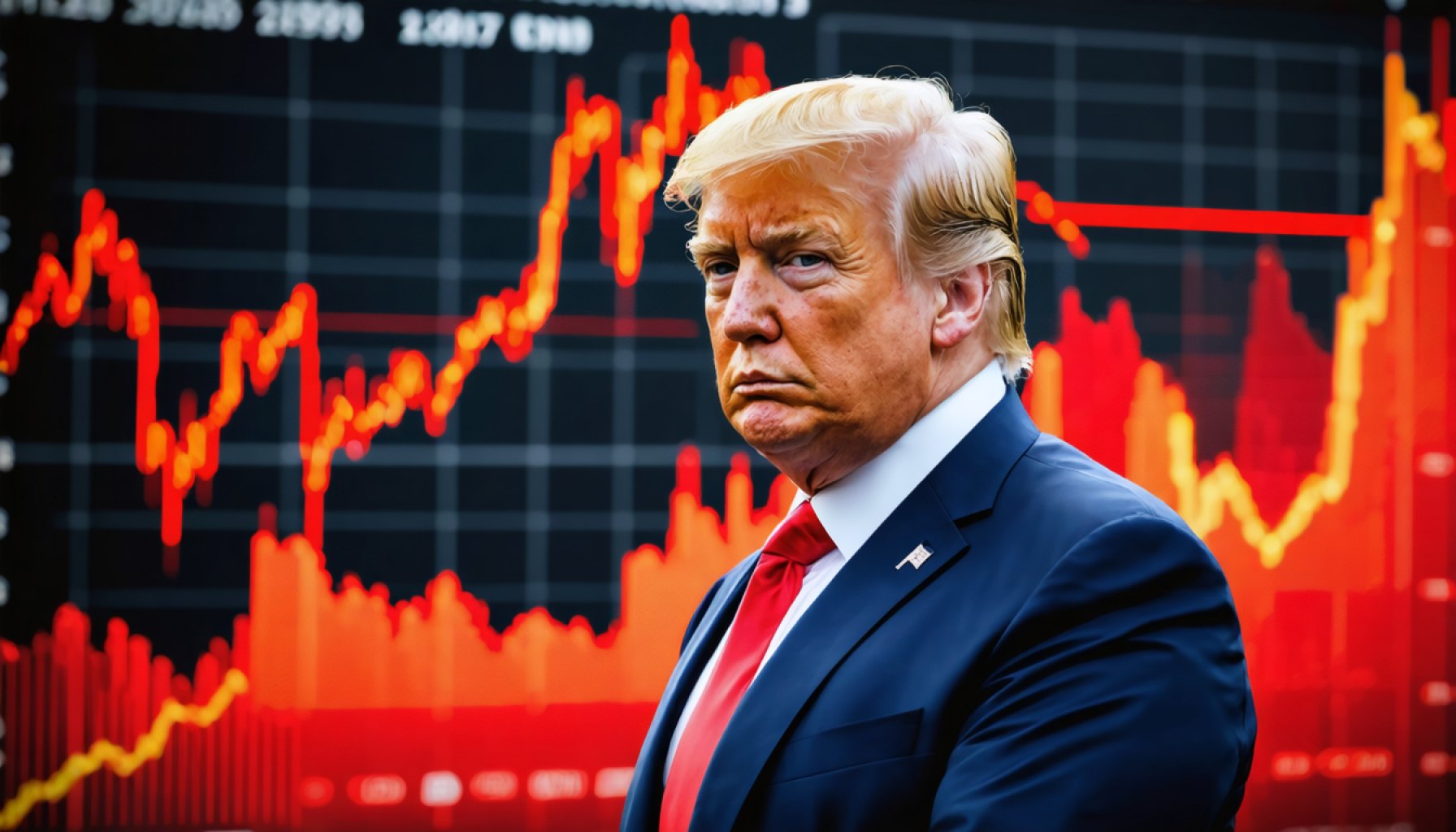
- Fiserv’s appearance on the New York Stock Exchange marked a major market downturn, with the Dow Jones Industrial Average plummeting nearly 1,700 points, the biggest drop since 2020.
- The decline was triggered by President Trump’s announcement of new tariffs, including a 10% levy on imports set to begin April 5, causing widespread market unease.
- The S&P 500 and Nasdaq also suffered significant losses, with the Nasdaq experiencing its largest single-day drop since the pandemic’s onset.
- Retailers like Walmart, Amazon, and tech giant Apple were notably impacted due to their reliance on Asian imports.
- Oil prices fell by 5.5%, reflecting concerns about potential global economic slowdowns.
- The tariff strategy raises questions about balancing domestic economic protection with global trade interdependencies.
- Uncertainty persists regarding the long-term effects on market stability and global economic dynamics.
The cacophony of the New York Stock Exchange bell marked a grim milestone as Fiserv took center stage, signaling the end of a day that will remain etched in financial history. On Thursday, the Dow Jones Industrial Average nosedived nearly 1,700 points, carving out the greatest daily loss since the turmoil of 2020. The catalyst? A storm of new tariffs unveiled by President Trump, casting a pall over global markets.
The president’s unexpected tariff declaration reverberated through the corridors of Wall Street, shaking the foundations of investor confidence. With the imposition of a sweeping 10% levy on imports effective April 5 and steeper charges for certain nations, the plan aims to bolster domestic industries. Yet, the immediate consequences have rippled like shockwaves through diverse sectors, sowing uncertainty and apprehension.
The broader S&P 500 succumbed to the pressure, plummeting by approximately 275 points, a 4.8% decline, while the tech-centric Nasdaq crashed nearly 6%, suffering its most significant single-day loss since the pandemic ushered in volatility. The repercussions extended far beyond indexes, hammering retail giants such as Walmart and Amazon, whose fortunes are intertwined with Asian imports. Apple, with its hefty reliance on Chinese manufacturing, endured a severe 9.25% drop.
Oil prices, too, buckled under the weight of looming tariff implications. The market’s trepidation about a potential global economic deceleration caused a precipitous 5.5% fall, marking the sharpest daily descent in nearly three years.
Beyond the numbers, the palpable anxiety among investors underscores a broader narrative—the delicate balance between safeguarding domestic economic interests and fostering an interconnected global marketplace. This volatility serves as a poignant reminder of the intricate tapestry that forms today’s international trade networks. President Trump’s bold tariff strategy casts uncertainty not only on market stability but also on the intricate web of global economic interdependencies.
As the dust settles, the focus inevitably turns toward whether this will mark the beginning of long-term economic recalibration or a transient upheaval in a boundless ocean of market fluctuations. In the landscape of global finance, where responses to policies echo with tremendous impact, observers and stakeholders alike are left to ponder this intricate, evolving dance.
Unraveling the Potential Ripple Effects of the Fiserv Stock Exchange Event
Overview and Market Analysis
The recent downturn in the U.S. stock markets, triggered by President Trump’s newly announced tariffs, has left investors reeling. While the immediate repercussions are evident in the sharp declines of major stock indexes and tech giant valuations, the longer-term effects may be varied and complex. Let’s explore the broader implications, potential strategies, and expert insights that can help investors and businesses navigate these turbulent financial waters.
Understanding the Impacts of Tariffs
Real-World Use Cases:
1. Manufacturing Adjustment:
– Companies heavily reliant on international supply chains, like Apple, may need to consider diversifying their manufacturing bases to mitigate potential supply disruptions and cost increases. This could include expanding or re-establishing facilities in more tariff-resilient regions.
2. Re-assessment of Pricing Strategies:
– Retailers like Walmart and Amazon might explore pricing adjustments on goods to offset tariff impacts while maintaining competitiveness. This could involve renegotiating supplier contracts or passing some costs onto consumers.
Market Forecasts & Industry Trends:
– Industry experts suggest that the tariffs may prompt accelerated innovation and increased investment in domestic manufacturing capabilities, a potential boon for job creation in certain sectors but a challenge for others straddling international dependencies.
How to Mitigate Risk in an Uncertain Economic Environment
How-To Steps & Life Hacks:
1. Portfolio Diversification:
– Consider a diversified investment strategy that buffers against sector-specific downturns by spreading capital across varying asset classes and geographical regions.
2. Monitoring Economic Indicators:
– Stay abreast of economic indicators such as GDP growth rates, consumer confidence, and import/export balances to better anticipate market shifts.
3. Hedging Strategies:
– Utilize hedging mechanisms, such as options and futures, to protect investments against adverse market movements directly linked to tariff imposition.
Security & Sustainability
Sustainable Business Practices:
– As companies navigate the tariff landscape, there’s a growing emphasis on sustainable business practices. This involves evaluating entire supply chains for energy efficiency, reducing carbon footprints, and ensuring that ethical sourcing standards are met, which could potentially mitigate some of the negative reputational impacts of tariff strategies.
Pros & Cons Overview
Pros:
– Potential Domestic Industry Growth: The tariffs aim to protect and promote domestic industries, potentially leading to job growth and reduced reliance on imports.
– Encouragement of Innovation: Pressure on foreign reliance might drive innovation in domestic tech and manufacturing sectors.
Cons:
– Increased Costs for Businesses and Consumers: Tariffs may lead to higher prices, which businesses might pass on to consumers, increasing the cost of living.
– Market Volatility and Investor Uncertainty: Sudden policy shifts create uncertainty, impacting stock market stability and investor assurance.
Concluding Thoughts and Recommendations
As investors and stakeholders navigate these turbulent times, it is essential to maintain a vigilant, informed, and adaptive approach. Consider diversification, monitor policy developments closely, and remain flexible to pivot strategies as necessary. By understanding the broader economic landscape and employing strategic foresight, it is possible to mitigate risks and seize opportunities that arise amid uncertainty.
Related Resources
For more on how global economic policies might affect investments, visit The New York Times.
By grasping the intricacies of these market dynamics, investors can better navigate tumultuous times, preparing for both immediate impacts and the potential for long-term economic shifts.



